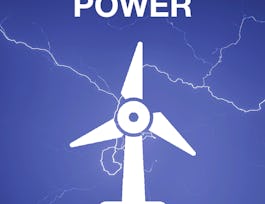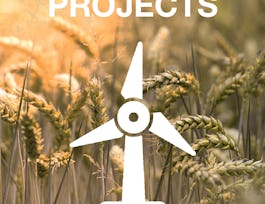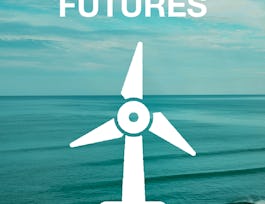What do you picture when you hear the term “renewable energy?” Do you imagine fields of solar panels, giant windmills, or huge hydroelectric dams? Those are all examples of large-scale, grid-tied systems. In this course, we’ll go much smaller and focus on off-grid, stand-alone systems.

Give your career the gift of Coursera Plus with $160 off, billed annually. Save today.


Exploring Renewable Energy Schemes

Instructor: Jorge Santiago-Aviles
29,748 already enrolled
Included with 
(610 reviews)
What you'll learn
Identify the essential characteristics and technical requirements of photovoltaic, wind, and low head hydroelectric energy systems.
Integrate scientific and technological principles necessary to assess and implement small-scale renewable energy schemes.
Develop a plan for implementing a small-scale renewable energy scheme.
Skills you'll gain
Details to know

Add to your LinkedIn profile
13 assignments
See how employees at top companies are mastering in-demand skills


Earn a career certificate
Add this credential to your LinkedIn profile, resume, or CV
Share it on social media and in your performance review

There are 6 modules in this course
In this module, we’ll get started by getting familiar with the course and our community expectations. Then, we'll explore the solar spectrum, the Stefan Boltzmann Law, and Wien’s Displacement Law. Each plays a significant role in helping us capture as much energy as we can from the sun. We’ll also explore direct beam and diffuse radiation and consider the implications for solar panel orientation.
What's included
5 videos10 readings2 assignments1 discussion prompt
In this module, we’ll explore the essential element of any photovoltaic system: the solar cell. We’ll examine all aspects of the solar cell, moving from the single cell to a collection of cells that allow us to harness the sun’s power.
What's included
5 videos3 readings3 assignments1 discussion prompt
The charge controller is a key element of any simple photovoltaic system. This device helps you avoid over or under charging your battery or battery bank. In this module, we’ll focus on both charge controllers and inverters and their important role in photovoltaic systems.
What's included
3 videos4 readings2 assignments1 discussion prompt
In this module, we’ll start thinking about how to design a simple photovoltaic system. We’ll examine efficiency and develop strategies for determining the right components to meet our energy needs.
What's included
6 videos5 readings2 assignments1 discussion prompt
Humans have been harnessing the wind’s power for centuries. We’ve used it to help us sail ships, pump water, and grind gain. In modern times, we’re using wind energy to power our homes. The state of California, a pioneer in wind energy utilization, produces energy from its wind turbine farms in excess of 20 terawatts annually. That’s enough energy to power 3 million households.
What's included
5 videos3 readings2 assignments1 discussion prompt
In this module, we’ll explore the ways water can generate electricity and discuss the components of low-head hydroelectric systems.
What's included
4 videos3 readings2 assignments1 peer review1 discussion prompt
Instructor

Offered by
Recommended if you're interested in Environmental Science and Sustainability

University of Colorado Boulder

University of Colorado Boulder

University of Colorado Boulder

University of Colorado Boulder
Why people choose Coursera for their career




Learner reviews
Showing 3 of 610
610 reviews
- 5 stars
79.05%
- 4 stars
17.51%
- 3 stars
1.96%
- 2 stars
0.65%
- 1 star
0.81%

Open new doors with Coursera Plus
Unlimited access to 7,000+ world-class courses, hands-on projects, and job-ready certificate programs - all included in your subscription
Advance your career with an online degree
Earn a degree from world-class universities - 100% online
Join over 3,400 global companies that choose Coursera for Business
Upskill your employees to excel in the digital economy
Frequently asked questions
Access to lectures and assignments depends on your type of enrollment. If you take a course in audit mode, you will be able to see most course materials for free. To access graded assignments and to earn a Certificate, you will need to purchase the Certificate experience, during or after your audit. If you don't see the audit option:
The course may not offer an audit option. You can try a Free Trial instead, or apply for Financial Aid.
The course may offer 'Full Course, No Certificate' instead. This option lets you see all course materials, submit required assessments, and get a final grade. This also means that you will not be able to purchase a Certificate experience.
When you purchase a Certificate you get access to all course materials, including graded assignments. Upon completing the course, your electronic Certificate will be added to your Accomplishments page - from there, you can print your Certificate or add it to your LinkedIn profile. If you only want to read and view the course content, you can audit the course for free.
You will be eligible for a full refund until two weeks after your payment date, or (for courses that have just launched) until two weeks after the first session of the course begins, whichever is later. You cannot receive a refund once you’ve earned a Course Certificate, even if you complete the course within the two-week refund period. See our full refund policy.

